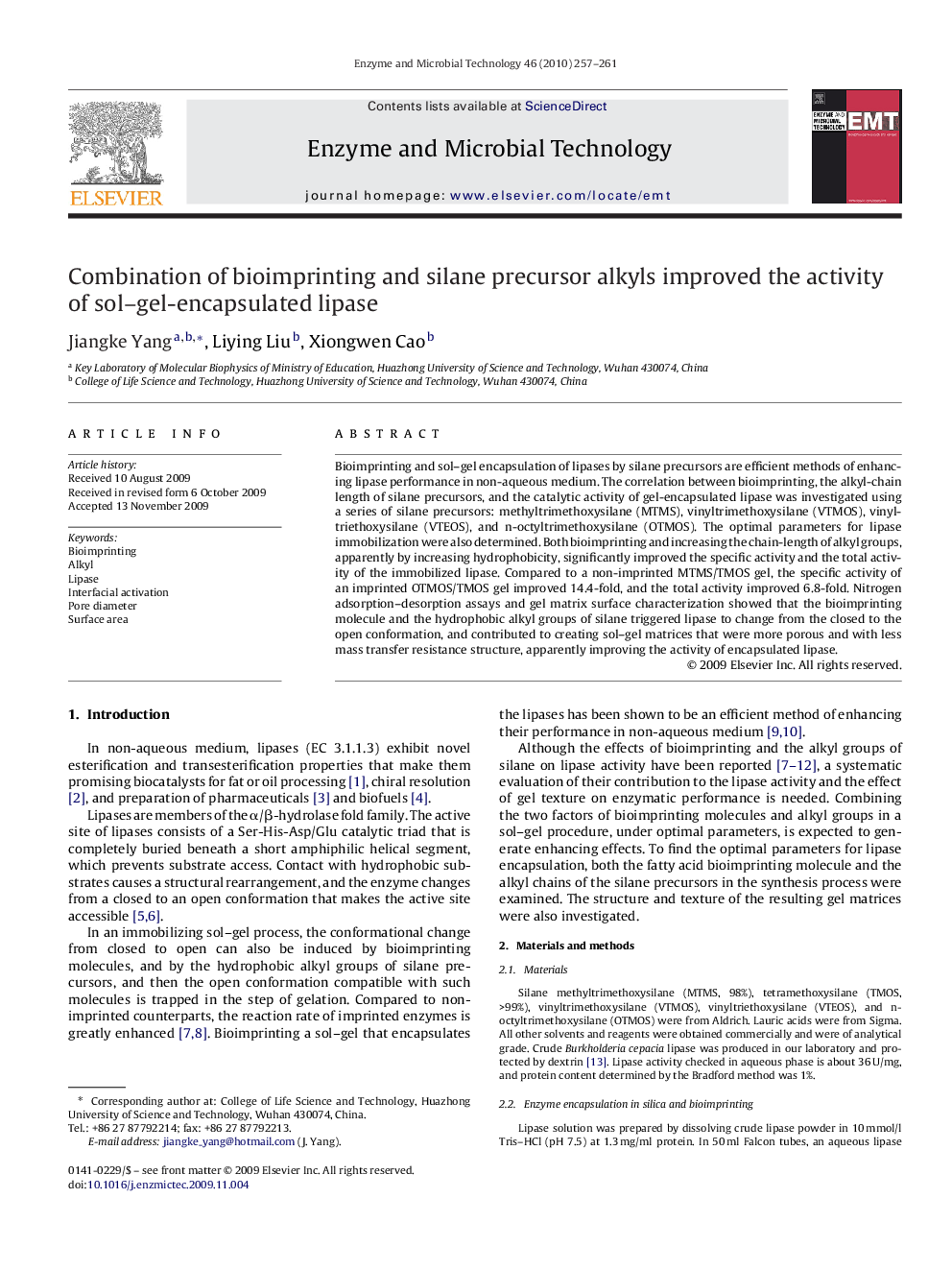| Article ID | Journal | Published Year | Pages | File Type |
|---|---|---|---|---|
| 17638 | Enzyme and Microbial Technology | 2010 | 5 Pages |
Bioimprinting and sol–gel encapsulation of lipases by silane precursors are efficient methods of enhancing lipase performance in non-aqueous medium. The correlation between bioimprinting, the alkyl-chain length of silane precursors, and the catalytic activity of gel-encapsulated lipase was investigated using a series of silane precursors: methyltrimethoxysilane (MTMS), vinyltrimethoxysilane (VTMOS), vinyltriethoxysilane (VTEOS), and n-octyltrimethoxysilane (OTMOS). The optimal parameters for lipase immobilization were also determined. Both bioimprinting and increasing the chain-length of alkyl groups, apparently by increasing hydrophobicity, significantly improved the specific activity and the total activity of the immobilized lipase. Compared to a non-imprinted MTMS/TMOS gel, the specific activity of an imprinted OTMOS/TMOS gel improved 14.4-fold, and the total activity improved 6.8-fold. Nitrogen adsorption–desorption assays and gel matrix surface characterization showed that the bioimprinting molecule and the hydrophobic alkyl groups of silane triggered lipase to change from the closed to the open conformation, and contributed to creating sol–gel matrices that were more porous and with less mass transfer resistance structure, apparently improving the activity of encapsulated lipase.
